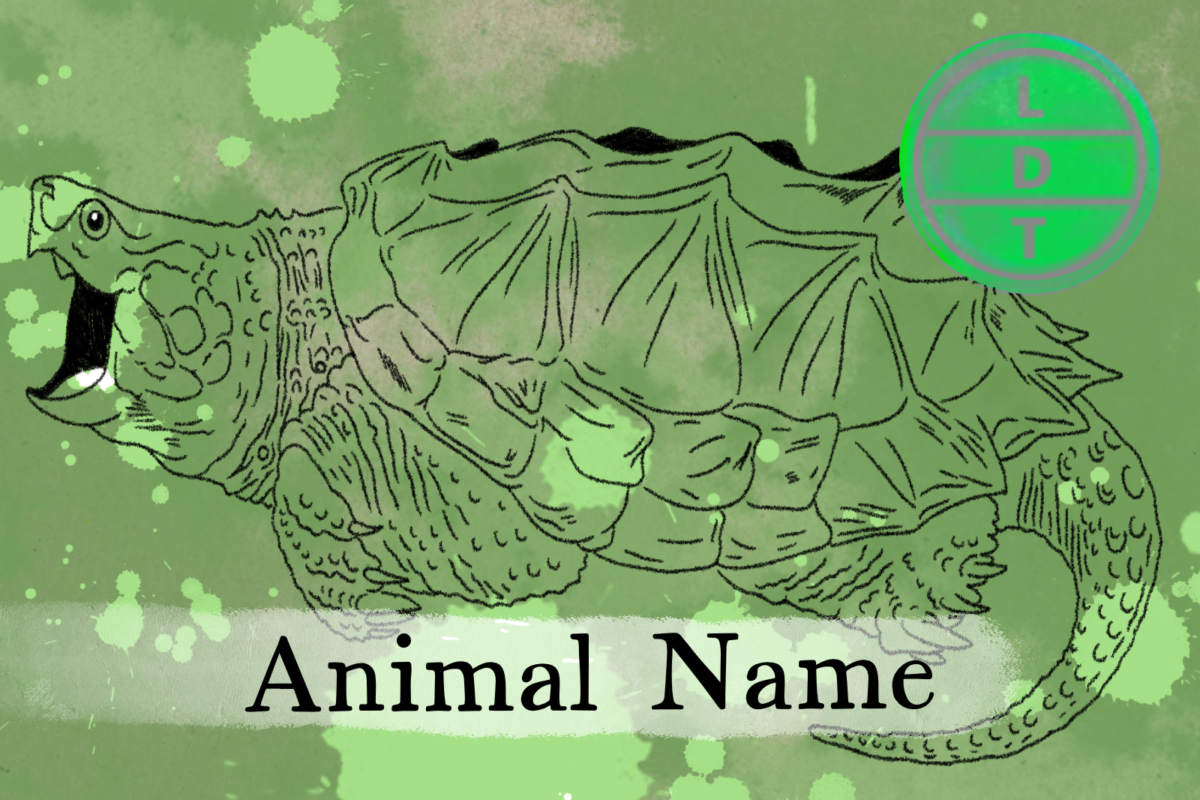“…and today we’re talking about the swamp’s angriest stone. But more on that later.”
As if you needed another reason not to go traipsing around the swamps of the American South, the alligator snapping turtle brings a few hundred pounds of armored power to the equation. But swamps aren’t really known for having crystal clear water, so how can you see where you’re going and, more importantly, where that hillbilly noodler’s toe is? It’s all about using your throat here in Life, Death, and Taxonomy.
Description
- So have you ever seen an alligator snapping turtle? They have a big ol’ head and a thick shell with three rows of scales on their back.
- Kinda like a dinosaur, right? But one way to tell them apart from regular snapping turtles is by the raised plates and spikes on their shell.
- They usually come in gray, brown, black, or olive-green, and they can get pretty slimy from all the algae they hang out with.
- Oh, and check out those yellow patterns around their eyes – helps them blend in with the environment.
- And get this – they even have fleshy “eyelashes” arranged in a star shape! How cool is that?
Measure Up
Welcome to the beloved Measure Up segment. The official listener’s favorite part of the show! The part of the show when we present the animal’s size and dimension in relatable terms through a quiz that’s fun for the whole family. It’s also the part of the show that’s introduced by you when you send in audio of yourself saying, singing, or chittering the words Measure Up into ldtaxonomy at gmail dot com. We don’t have a new measure up intro.
Length
- 31.8 inches long
- How many alligator snapping turtles go into the longest-ever alligator gar?
- Hint: The alligator gar is a large fish with a jaw filled with sharp teeth. Though they are sizable and sharp-toothed, they rarely pose a threat to humans and only threaten anglers that try to land them in boats. In fact, there is no confirmed report of a gar intentionally going after a human.
- 3.1 turtles. The largest one on record was 8 feet 5 inches (256.54 cm).
Weight
- 176 pounds
- How many alligator snapping turtles go into the biggest piece of candy?
- Hint: The largest candy was a piece of butterscotch that was made in Norway in 1997 by the candy company Nidar.
- 20 turtles. The butterscotch was 1.6 tonnes (3,527 lb).
Fast Facts
The alligator snapping turtle is mostly found in the freshwaters of the southeastern United States. It can be found from the Florida Panhandle to East Texas and as far north as southeastern Kansas, Missouri, southeastern Iowa, western Illinois, southern Indiana, western Kentucky, Louisiana, and western Tennessee.
Only female turtles usually venture onto open land for nesting purposes. In most cases, they are found in bodies of water that flow into the Gulf of Mexico. They particularly like shady areas of water with tree canopy overhead.
There is a non-native invasive population in South Africa. Finally, a Floridian animal is invading somewhere else instead of vice versa.
They are opportunistic carnivores that eat fish, mollusks, carrion, and amphibians, but it is also known to eat snakes, snails, worms and other invertebrates, crawfish, insects, water birds, aquatic plants, other turtles, small alligators, and human fingers if given the express opportunity.
They will hunt actively during the night but become ambush predators during the day, attracting fish to their mouths with two worm-like protrusions on their tongues.
Major Fact: Always Follow Your Throat
The Alligator Snapping Turtle lives in pretty murky waters most of the time, so like many animals, it rarely relies on its eyes to find prey.
Outside of the springs in the center, I know that Florida isn’t really known for having crystal-clear water.
Most animals that can’t use their eyes smell with their noses instead, but that’s not much of an option underwater.
We’ve actually seen some interesting ways that animals find their way around murky water. The star-nosed mole breathes out a bubble and sucks it back in to smell underwater. The electric eel uses electricity. But the snapping turtle uses something called gular pumping.
This is like the buccal pumping that air-breathing fish like the snakehead or mudskipper do, but it involves basically vacuum pumping water into a Soviet throat prison called the gular. The snapping turtle has chemosensory organs inside their gulars, allowing them to detect nearby fish and tasty dead things to eat.
Other animals, like some lizards, do some good ol’ fashioned gular pumping, but that is to help them breathe. The snapping turtle will get a big gulp of water and say; I think there’s some swamp meat that way.
So the snapping turtle literally smells with its throat (we talked about a bird that breathes through its bones two weeks ago, and now we’re smelling with our throats. What’s next?)
Ending: So nestle into a swamp bed, stick your tongue out, and practice your gular pumping like the alligator snapping turtle here in LDT.

